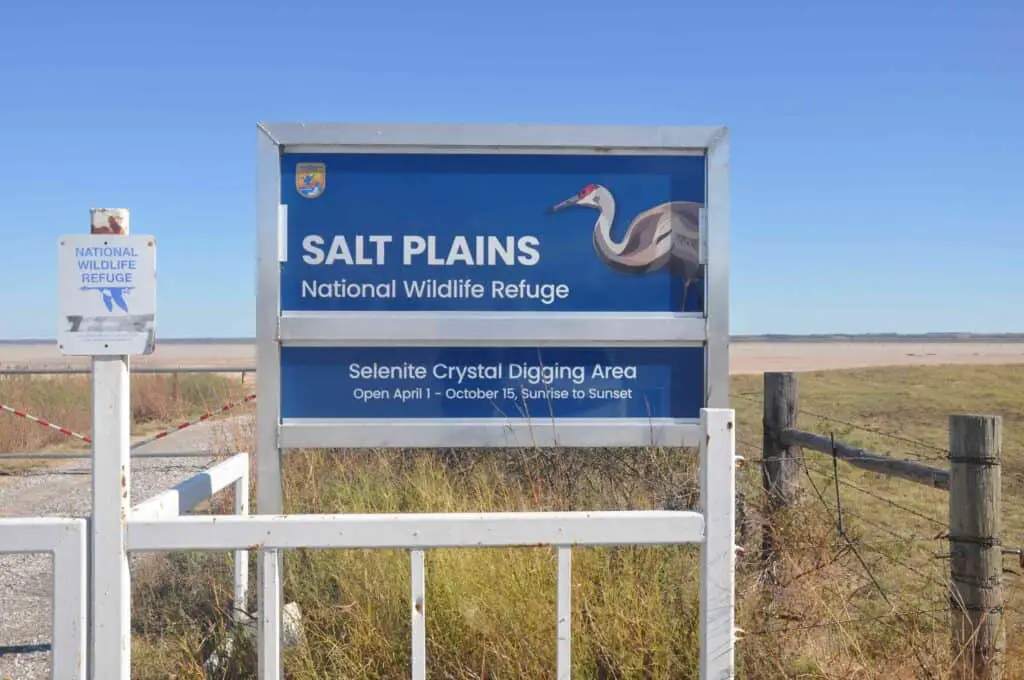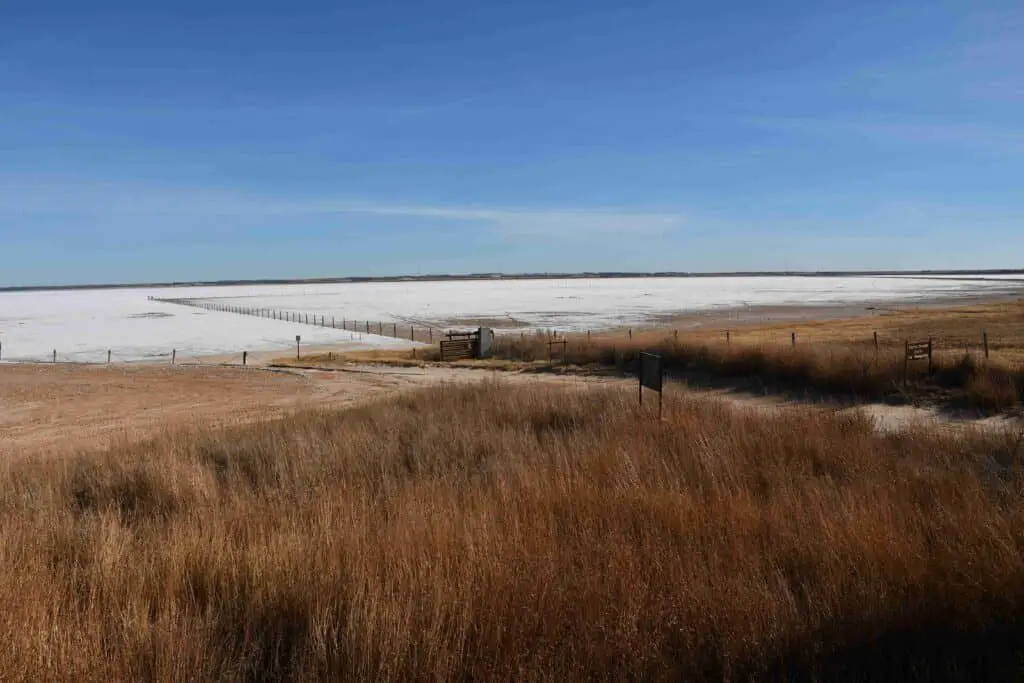Selenite (hydrous calcium sulfate) is a crystallized form of gypsum, and while you can find selenite in several parts of the world, there’s only one place on Earth where it forms into a unique hourglass shape—and where you’re free to dig it up yourself. That place is the Salt Plains National Wildlife Refuge, just outside the Great Salt Plains Reservoir in north-central Oklahoma.

From April 1 through October 15, anyone can grab a shovel, roll up their sleeves, and head into the dig site in search of these otherworldly treasures. The digging is completely free, and it makes for a surprisingly satisfying adventure. Years ago, we took the kids out there for a day of crystal hunting—sun on our backs, salt crunching beneath our feet, the thrill of discovery in the air. It was simple, hands-on fun. I plan to go again this summer.
The Salt Plains themselves are a strange and stunning sight. Completely bare of vegetation, the flats stretch seven miles long and three miles wide. It’s flat as far as the eye can see, covered in a crust of white salt that sparkles under the Oklahoma sun. The landscape feels almost lunar—quiet, vast, and bright. That thin layer of salt isn’t just for show. It has a long and storied history. Indigenous tribes and early settlers harvested it, using it to cure meat and preserve food long before refrigeration existed.

The origin of all this salt dates back millions of years, when a shallow inland sea covered this region. As the sea dried up over time, layers of salt were left behind. Today, saline groundwater flows just a few feet below the surface. When it seeps upward and evaporates, a fresh layer of salt forms again, continually renewing the plains in a slow, steady cycle.
But it’s not just the salt and selenite that make this place special. The Salt Plains National Wildlife Refuge plays a critical role in the migratory journeys of countless birds. It’s an essential stopover for waterfowl, including sandhill cranes and even the endangered whooping crane. Every spring and fall, the flats and marshes come alive with wings and calls, a resting ground for travelers who’ve flown thousands of miles.
Running through this surreal landscape is the Salt Fork of the Arkansas River. It eventually joins the Arkansas River south of Ponca City, and it’s part of the reason why the Arkansas River is considered one of the most saline rivers in the country. The salt, once trapped in the plains, now continues its journey downstream, carried by water that’s shaped this region for millennia.
Back at the dig site, the selenite crystals lie just beneath the surface. With a little effort and patience, you can uncover them—clear, smooth, and sometimes bearing the rare hourglass inclusion that makes this location famous. That hourglass shape forms as sand becomes trapped inside the growing crystal, a beautiful accident of time and geology.
There’s something deeply satisfying about getting your hands dirty for a crystal that took thousands of years to form. Whether you’re a rockhound, a science enthusiast, or just someone looking for a unique day trip, the Salt Plains offer a one-of-a-kind experience that mixes geology, history, and a little bit of mystery.
Read more Nature Notes.








